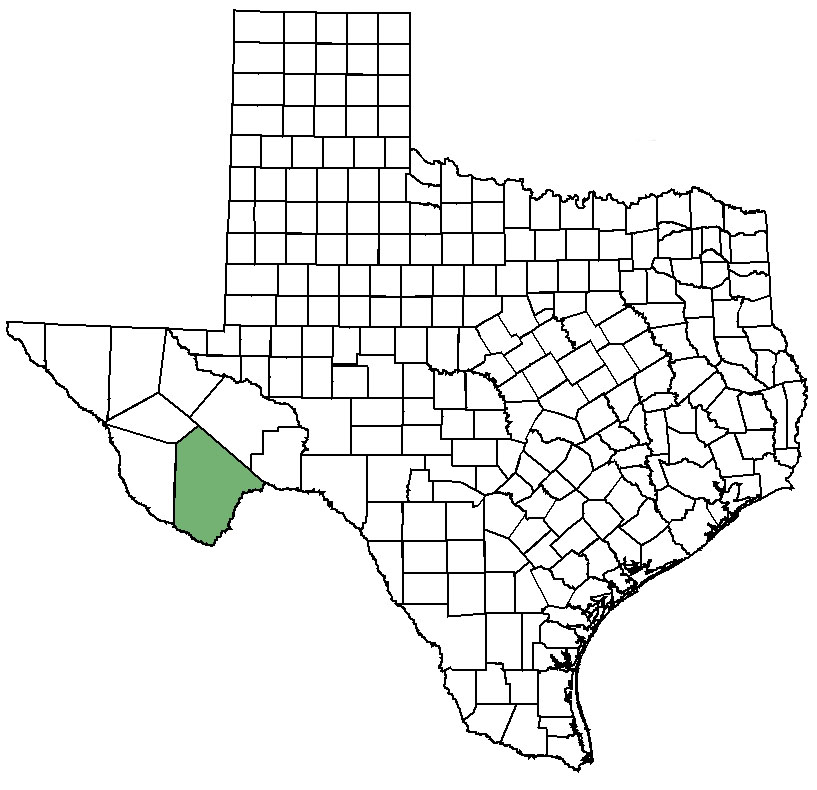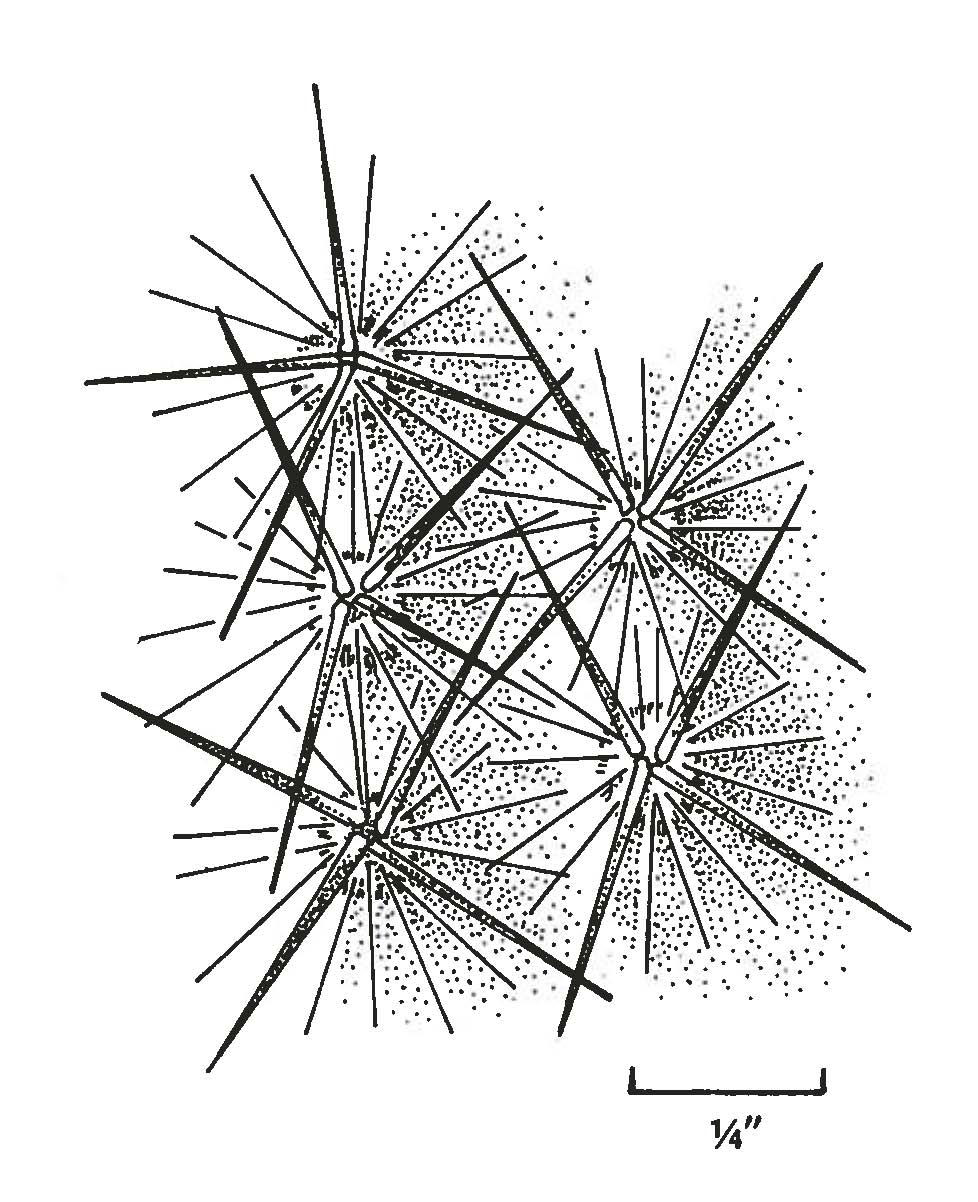Federal and State Listed Species of Texas:
Chisos Mountains hedgehog cactus

Current
null
null
Distribution map for Chisos Mountains hedgehog cactus (Echinocereus chisoensis var. chisoensis ).
Global Location
All the populations of Chisos Mountains hedgehog cactus are found within Big Bend National Park in Brewster County in West Texas.
null
Credit:
Description
Chisos Mountains hedgehog cactus cactus is a succulent perennial usually with solitary stems up to 30 cm tall and 3 to 5 cm wide. Stems have 10 to 16 vertical ridges that are divided into spine-tipped, cone-shaped projections 6 to 8 mm apart. Spines arising from each of these projections are numerous but are not so dense that they hide the stem completely. Some spines, called radial spines, form a ring around the projection’s tip somewhat like the spokes of a bicycle wheel. Other spines, central spines, arise interior to the radial spines and point somewhat outward and away from the stem. There are typically 10 to 17 thin radial spines that point up, down or sideways. The uppermost radial spines pointing upward are bristle-like and usually shortest at 1.6 to 3.2 mm long; the lowest radial spines pointing downward are rigid and usually longest at 6 to 20 mm long. Between these two groups &mash; physically and in length — are sideways-pointing radial spines which are hair-like and less than or equal to 9.5 mm long. As many as one to four, rarely six, straight central spines may be present but frequently only one or two "main" central spines are present. These "main" central spines are more conspicuous than the other spines and point directly outward from the stem. Chisos Mountains hedgehog cactus’ pink-magenta flowers are 6 to 6.4 cm long and 2.5 to 7 cm wide. The flower’s neck is wooly and has clusters of 8 to 14 stiff hair-like spines. Fruits are green to red and oval- to egg-shaped.
Chisos Mountains hedgehog cactus is a robust plant with pink-magenta flowers and very slender spines.
Credit: Jackie Poole, Texas Parks & Wildlife Department

Chisos Mountains hedgehog cactus has thin radial spines, usually 10 to 17, which are exterior to the 3 to 4 central spines. The illustration shows 13 to 14 radial spines and 4 central spines. Amongst the radial spines, the uppermost are usually the shortest, the lowest spines are usually longest and the sideways-pointing spines are between these two groups physically and in length.
Credit: Patrick Stark, Texas Parks & Wildlife Department
null
Credit:
Similar Species
Although no other species is likely to be confused with Chisos Mountains hedgehog cactus within its habitat, the above set of characteristics separates this species from other nearby cacti. The combination of individual robust plants with a knobby stem surface, the 10 to 17 radial spines in three groups of different sizes, the pink-magenta flower color and the hair-like spines of the flower’s neck creates a unique set of characters found in no other cacti.
null
Credit:
null
Credit:
null
Credit:
null
Credit:
null
Credit:
null
Credit:
Floral Characters
nullLeaf Characters
nullnull
Credit:
null
Credit:
null
Credit:
Habitat
Chisos Mountains hedgehog cactus occurs amongst Chihuahuan Desert shrublands or grasslands on gravelly soils of low elevation flats and terraces within the desert basin.
Habitat of Chisos Mountains hedgehog cactus.
Credit: Jackie Poole, Texas Parks & Wildlife Department
Life Cycle Events
Flowering occurs from March to April and perhaps subsequently. Fruiting occurs from May to June and perhaps into August.
Survey Season
Although the Chisos Mountains hedgehog cactus is visible year-round, it is most easily found while in flower in March and April.
Citations
- Amos, B and C. Vassiliou. 2001. Preliminary report on the reproductive biology of the threatened Chisos Mountain hedgehog cactus. In J. Maschinski. Proceedings of the third southwestern rare and endangered plant conference, Flagstaff, AZ. www.fs.fed.us publication, rmrs_p023_191_199.pdf.
Comments
The common southwestern cactus bee (Diadasia rinconis) has been observed collecting and brushing pollen onto flowers of Chisos Mountains hedgehog cactus. Although not officially documented, pollination of Chisos Mountains hedgehog by the cactus bee is likely (Amos & Vassiliou 2001). As its name suggests, the cactus bee relies specifically on cacti for food.